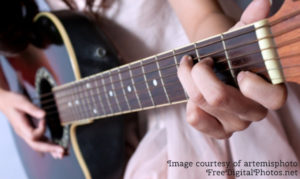
Watercolor paintbrushes come in an assortment of sizes, shapes and filament types from high-end Kolinsky sable watercolor brushes beginners’ brushes made from synthetic bristles. Which watercolor brush is the right one for you?
Watercolor paints are very versatile; they allow artists to render scenes in a variety of styles. When your brushstroke leaves a trail of paint on a piece of paper, light actually bounces off that page. It’s that light, cycling up through the pigment, that creates the colors that your viewers see. The type of watercolor brush you use will determine how much pigment ends up on the paper.
Synthetic Bristle Brushes
Synthetic bristle brushes are generally manufactured from nylon or polyester filaments. Synthetic bristle brushes tend to be more resistant to solvents than natural bristle brushes are, and the individual filaments are less likely to split or break off. Synthetic bristle brushes are popular with novice watercolorists. They’re also the brush of choice for acrylic painters because they aren’t damaged by the corrosive nature of acrylic paints.
Kolinsky Sable Brushes
Kolinsky sable brushes actually contain mink hairs, not sable hairs. These hairs retain their shape no matter how much paint is on the brush, which means you can paint very fine lines with these brushes. Both watercolorists and oil painters use them.
Hog Bristle Brushes
Hog bristle brushes are ideal for covering large spaces with a semi-transparent layer of color. These bristles are tough but flexible; they can carry and distribute a great deal of color in one swipe. The best hog bristle brushes are manufactured in China. In addition to rendering watercolor washes, these brushes are also great for painting with acrylics and oils.
Caring for a Watercolor Brush
High-end watercolor brushes can be costly; like any investment, they need to be cared for. Get into the habit of cleaning the paint off your brush as soon as you’re finished using it. If you’re not going to be using the brush again soon, it may actually be worth washing the bristles with a tiny bit of shampoo. Make sure to rinse out all the suds before you put the brush away.
Conclusion
Synthetic bristle brushes are popular with watercolorists and acrylic painters while kolinsky sable brushes are used by watercolorists and oil painters. Hog bristle brushes, on the other hand, can be used for watercolor, acrylics and oils. Regardless of what watercolor brush you use, it is important to care for your brush properly.

